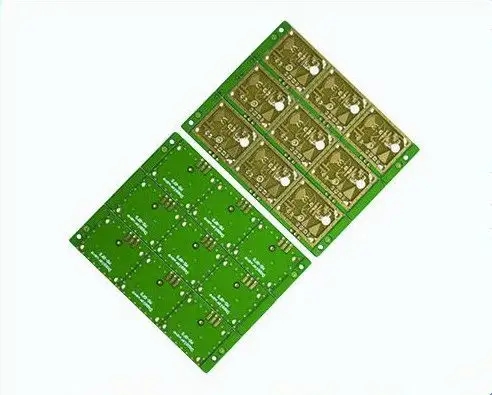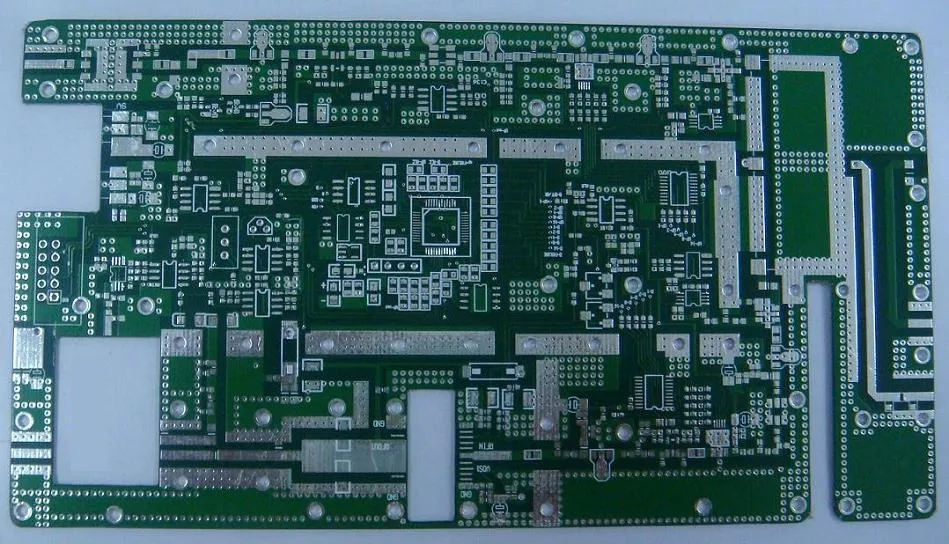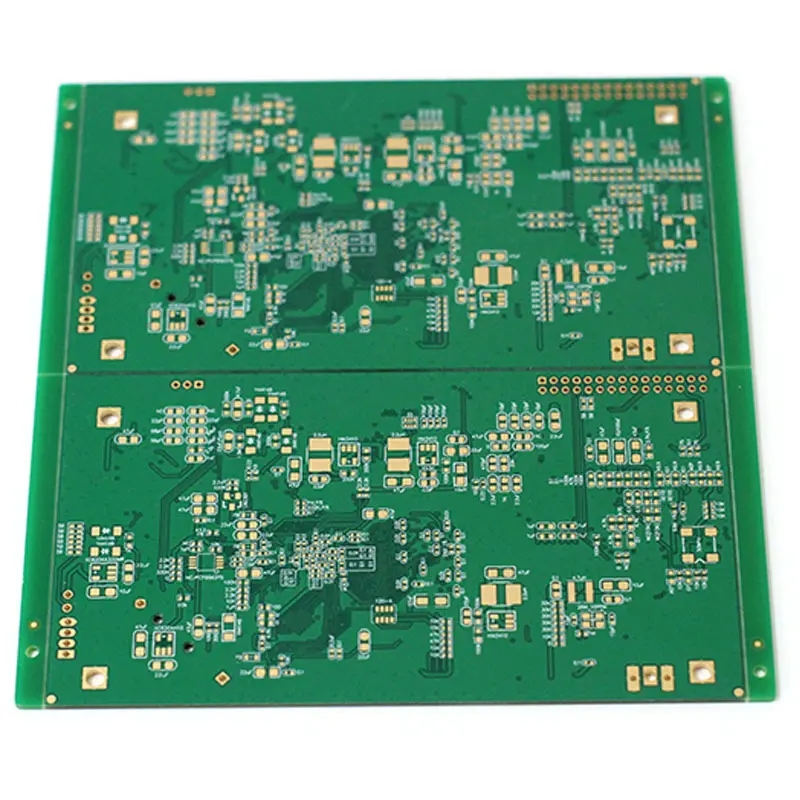
Precision Control Techniques and Methods for PCB Milling
PCB manufacturing, PCB design and PCBA processing manufacturers will explain the precision control skills and methods of PCB milling
The milling technology of PCB NC milling machine includes the selection of tool direction, compensation method, positioning method, frame structure, and tool setting point. Both are important aspects to ensure milling accuracy.
Tool direction and compensation method:
When the milling cutter cuts into the plate, one side to be cut always faces the cutting edge of the milling cutter, while the other side always faces the cutting edge of the milling cutter. The former has smooth and clean machined surface and high dimensional accuracy. The spindle always rotates clockwise. Therefore, whether the spindle is fixed and the worktable is fixed and the spindle is moved, the NC milling machine should adopt the counterclockwise tool path when milling the external contour of the PCB. This is commonly referred to as up milling. When milling the frame or slot inside the circuit board, the forward milling method is adopted. Milling plate compensation means that when milling, the machine tool automatically installs the set value so that the milling cutter automatically offsets half of the set milling cutter diameter, that is, the radius distance, with the center of the milling line, so that the milling profile is consistent with the program setting. At the same time, if the machine tool has the compensation function, it is necessary to pay attention to the compensation direction and the command to use the program. If the compensation command is used incorrectly, the PCB shape will increase or decrease the size equivalent to the length and width of the milling cutter diameter.
Positioning method and cutting point:
The positioning methods can be divided into two types; One is internal positioning, the other is external positioning. Positioning is also very important for the process designer. Generally, the positioning scheme should be determined when the circuit board is pre manufactured.

Internal positioning is a general method. The so-called internal positioning is to select the mounting hole, plug hole or other non-metallic hole in the printed board as the positioning hole. The relative position of the holes shall be on the diagonal line as much as possible and the holes with large diameter shall be selected as far as possible. Metalized holes shall not be used. Because the difference in the thickness of the coating in the hole will affect the consistency of the positioning hole you selected. At the same time, it is easy to damage the coating in the hole and on the edge of the hole surface when taking the board. Under the condition of ensuring the positioning of the printed board, the fewer the pins, the better. Generally, 2 pins are used for small plates and 3 pins for large plates. The advantages are accurate positioning, small deformation of plate shape, high accuracy, good shape and fast milling speed. Its disadvantage is that there are many kinds of holes in the plate, and it is necessary to prepare all kinds of pins with various diameters. If there is no available positioning hole in the plate, it is cumbersome to discuss with the customer about adding positioning holes in the plate during early fabrication. At the same time, different management of the milling template for each type of plate is more troublesome and costly.
External positioning is another positioning method, which is to add a positioning hole outside the plate as the positioning hole of the milling plate. The advantage is that it is easy to manage. If the early production is standardized, there are generally about 15 kinds of milling templates. Because of the use of external positioning, the board cannot be milled off at one time, otherwise the circuit board is very easy to be damaged, especially the panel assembly. The board will be damaged and the milling cutter will be broken because the milling cutter and the dust collector will bring the board out. The method of cutting and reserving joint points by sections is adopted. First, mill the plate. When the milling is completed, the program will be suspended, and then fix the plate with tape. Execute the second section of the program, and use a 3mm to 4mm drill bit to drill out the joint points. Its advantage is that the template is less expensive and easy to manage. It can be used to mill all circuit boards without installation holes and positioning holes in the board. It is convenient for small craftsmen to manage. In particular, the production of advanced production personnel such as CAM can be simplified, and the utilization rate of base materials can be optimized. The disadvantage is that due to the use of drill bits, the PCB has at least 2-3 convex points, which may not meet the customer's requirements. The milling time is long and the labor intensity of workers is slightly high.
Frame and lower tool point:
The fabrication of the frame belongs to the early fabrication of the circuit board. The frame design has an impact not only on the uniformity of electroplating, but also on the milling board. If the frame is not well designed, it is easy to deform or some small pieces of small waste are generated when milling the board. The waste blocks will block the dust suction tube or break the high-speed rotating milling cutter. The frame deformation, especially when positioning the milling board externally, will cause the deformation of the finished board. In addition, the cutting point and processing sequence are well selected, It can make the frame maintain the maximum strength and the fastest speed. The frame is easy to deform and the printed board is scrapped due to poor selection.
Milling process parameters:
The shape of printed circuit board is milled with carbide milling cutter, and the cutting speed of milling cutter is generally 180-270 m/min. The calculation formula is as follows (for reference only):
S=pdn/1000(m/min)
Where: p: PI (3.1415927)
d: Milling cutter diameter, mm
n; Milling cutter speed, r/min
PCB manufacturers, PCB designers and PCBA manufacturers will explain the precision control skills and methods of PCB milling.







